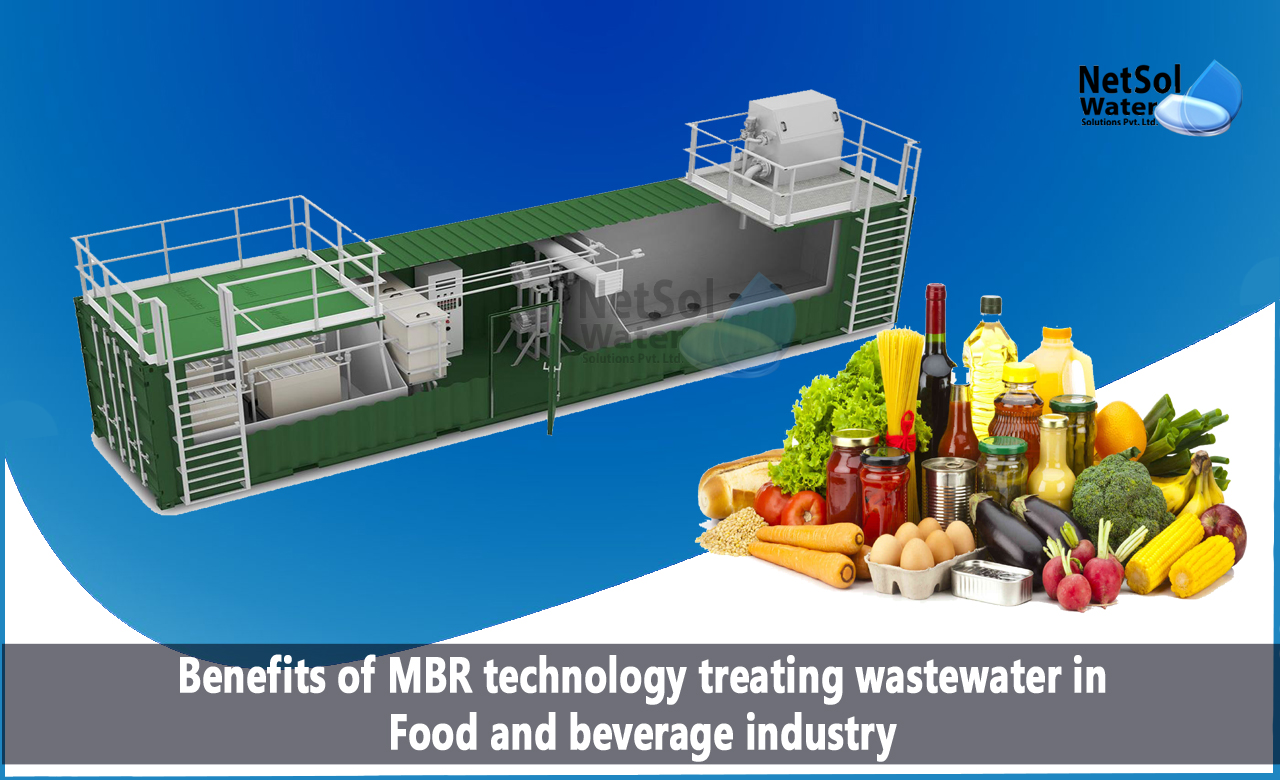Membrane separation is the technique used to achieve the selective separation of the membrane, in order to separate, purify, and concentrate various feed liquid components. It can be separated into organic membrane and inorganic membrane, based on various materials. The membrane can be classified into Microfiltration Membrane, Ultrafiltration Membrane, Nanofiltration Membrane, and Reverse Osmosis Membrane, based on the size of its pores.
Membrane bioreactor technology has been extensively used in the production of the food industry, because it combines the tasks of separation, concentration, purification, and refining as well as the qualities of high efficiency, energy savings, and environmental protection. Dairy products, soy products, fruit and vegetable juices, the brewing and sugar industries, the concentration of egg whites, the separation and concentration of food additives like natural colours and spices, etc., are just a few of the major applications.
How is MBR used in treating food and beverage industry wastewater?
Nutrients, suspended and dissolved solids, pesticides, solvents, and other material residues, may be present in food and beverage wastewater. Water is used in food processing applications as an ingredient, an initial and intermediate cleaning source, an effective raw material transport conveyor, and the main agent for sanitizing plant equipment and workspaces.
Due to this considerable water use, the food industry's top priority is to handle water and wastewater, in the most economical way possible and reuse it whenever possible, in order to save money and maintain environmental compliance. Every food industry application should have a process design that is unique, to the requirements of your business for maximum efficacy and efficiency.
What are the benefits of MBR technology in treating food and beverage industry wastewater?
MBR technology has advantages over conventional methods in the food and beverage industry.
1. There are no chemical reagents or additives utilized, and the product is clean.
2. When done in a closed system, the separated food doesn't experience browning or colour degradation.
3. Excellent adaptability, wide range of applications can be used for processes, such as separation, concentration, purification, and clarification.
4. Excellent performance that cannot be matched by regular filter materials, good selectivity, and the ability to separate materials at the molecular level.
5. It is performed at room temperature with less nutritional loss, making it especially suitable for the concentration and enrichment of heat-sensitive substances, like fruit juice and enzymes.
6. Membrane modules can be used separately or in combination, and the treatment scale can be large or small, continuous or intermittent. The procedure is straightforward to handle, simple to automate, and simple to understand.
7. Since, there is no phase change, less volatile elements, such as aromatic compounds, are lost, allowing the original fragrance to be preserved. The energy consumption is low when compared to other separation methods, and the phase change separation method.
8. The cost of separating water is roughly half that of freezing or evaporation.
Conclusion
In the food and beverage business, MBR technology is being used more and more frequently. It has a small footprint, stable effluent quality, good nitrification and denitrification effects, high nitrogen removal efficiency, and high solid-liquid separation efficiency.
As a result, the MBR process is applied broadly in a growing number of fields. A pretreatment system is frequently the most straightforward and economical approach, when the only aim is to reduce regulated elements to allowable discharge levels.
Additionally, by implementing a system based on the Dissolved Air Flotation process, you can significantly reduce the amount of suspended solids, oil and grease, and BOD. Following the MBR tank's treatment of the wastewater, the effluent can either be discharged directly or after treatment, in accordance with wastewater discharge standards, or it can be reused depending on its actual situation through a series of water treatment processes, including microfiltration-ultrafiltration-nanofiltration-reverse Osmosis.
For further information, you can reach us via phone at +91 9650608473 or drop a mail at enquiry@netsolwater.com



